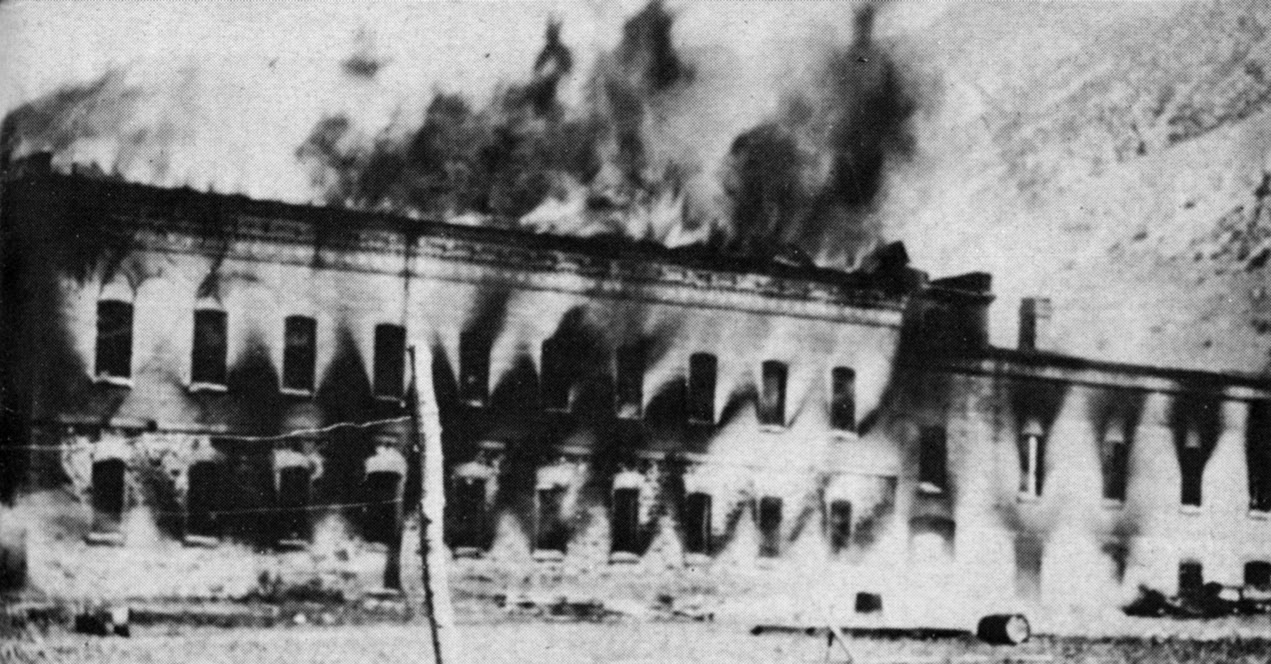The never-finished dormitory building at Camp Lorenzo
Photograph Copyright 1981 Frederick M. Huchel
Wool is extremely flammable, and the woolen factory caught fire and burned in 1877. It was rebuilt, larger and better, and ran into the late 1880s, when the United Order disbanded.
The Rebuilt Mill, 1878
Public Domain
Public Domain
The superintendent of the mill, James Baron, moved operations to Hyrum. In 1907, the mill burned again. In 1915, Mr. Baron rebuilt the mill, and returned the operation to Brigham City. The mill burned again in 1950. The Baron family rebuilt the mill, larger, stronger, and better. This time, they built the offices as a separate structure, to prevent loss of records should another fire consume the mill.
The 1950 Fire
From Through the Years, 1953
From Through the Years, 1953
The grandsons of James Baron, Lowell, Dale, and Rex (Brother Glen had retired from the business), sold the business in 1988. Mismanagement brought bankruptcy to the new owner. Another owner tried mightily to bring the business back, but in the end, was not successful. The building has sat empty since about 2003. (KSL.com, June 30, 2014).
Then, on Sunday evening, June 29, 2014, a five-alarm fire destroyed the empty woolen mill.
Photographs posted at KSL.com
So, the woolen mill, the last remaining of the Brigham City coöperative industries, was the last to fall to destruction. It burned, in June, 2014, for the fourth — and likely final — time. Our historical resources from Brigham City’s pioneer days are fast disappearing.






No comments:
Post a Comment
Note: Only a member of this blog may post a comment.